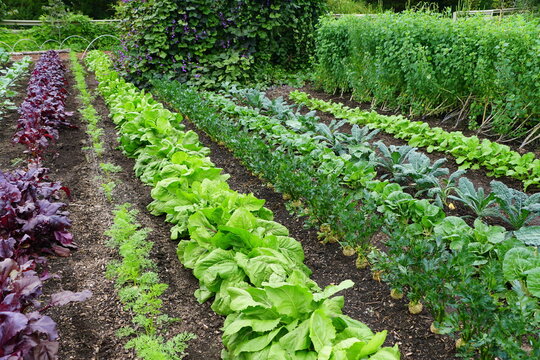Sow, grow, rotate: How crop rotation promotes gardening success

MILAN, Ill. — With a new year comes and opportunities for a new start… especially in the garden.
As we look through seed catalogs and past garden records to develop plans for next year’s planting, crop rotation in an annual garden bed is an important management method to implement. Crop rotation is a cultural gardening practice that involves strategically planting unrelated plant species in a garden plot in succession years.
Disease, pest pressure, and soil fertility challenges can be exacerbated when related crops are planted in the same area of garden year after year. Crops in the same botanic family are often susceptible to the same biotic pests and diseases. Crops in the same family utilize similar nutrients from the soil. By rotating crop families, pest pressure can be managed, and soil fertility can be restored.
Whether growing in ground or in containers, crop rotation can work in any garden no matter the size or configuration. An effective schedule rotates plant families from bed to bed, moves plant families as far from the previous year’s location as possible, and provides as many seasons as possible between replanting crops of the same family. A three-to-five-year schedule is recommended as a minimum for the method to be most effective and beneficial. Sample plans are provided at the end of this article.
Developing a rotation schedule
A crop rotation schedule is based on the plant families of crops grown and space available. Rotation schedules vary in complexity. Some plans are as simple as changing the family of plants grown on a plot of land each year while others may be more complex and involve using cover crops for a year during the rotation schedule.
When using a green cover crop in a rotation schedule, account for the crop family in the succession plan of the garden. The USDA recommends annual ryegrass (Poaceae), oilseed radish (Brassicaceae), winter cereal rye (Poaceae), and oats (Poaceae) for soil conservation. Forage radish and forage turnips, both in the Brassicaceae family, are recommended to help improve compacted soils. Crimson clover, hairy vetch, and Austrian winter pea are legumes (Fabaceae) and can contribute nitrogen (N) to soil profiles.
When developing a rotation schedule, begin with knowing what crops are going to be planted and to which family they belong. Creating garden zones or using separate beds encourages rotation. A greater number of zones provides an opportunity for more plant families to be rotated through the garden each year. Keep good garden records from year to year to maintain a rotation schedule and maximize benefits of the cultural practice.
Commonly grown garden crops and their families:
- Asteracea: sunflower, lettuce, endive
- Amaryllidaceae: chive, garlic, leek, onion, shallot, green onion,
- Apiaceae: carrot, celery, parsley, parsnip
- Amaranthaceae: beet, spinach, Swiss chard
- Brassicaceae: broccoli, Brussels sprouts, cabbage, cauliflower, kale, kohlrabi, mustard greens, radish, turnip, Bok choi, rutabaga
- Convolvulaceae: sweet potato
- Curcurbitaceae: cucumber, muskmelon, pumpkin, summer squash, winter squash, watermelons
- Fabaceae: bush bean, kidney bean, lima bean, pole bean, wax bean, soybean, pea, edamame
- Poaceae: sweet corn, popcorn, field corn, wheat, rye, rice
- Solanaceae: tomato, tomatillo, potato, pepper, eggplant, ground cherry, husk cherry
Sample Rotation Schedules
Four Year: Fabaceae – Brassicaceae – Solanaceae – Curcurbitaceae
Four Year: Solanaceae and Curcurbitaceae – Amaryllidaceae, Amaranthaceae, and Apiaceae – Fabaceae and Asteraceae – Poaceae
Five Year: Brassicaceae – Apiaceae and Amaranthaceae- Fabaceae – Solanaceae – Curcurbitaceae
Good Growing Fact of the Week: If garden space is limited, some vegetables can be incorporated into ornamental garden beds as annuals. Crops like cabbage, lettuce, Swiss chard, peppers, herbs and more are ornamental and edible.
Miss Clipping Out Stories to Save for Later?
Click the Purchase Story button below to order a print of this story. We will print it for you on matte photo paper to keep forever.

